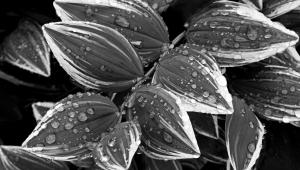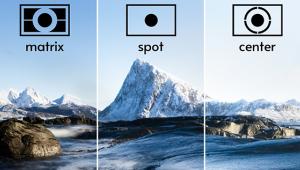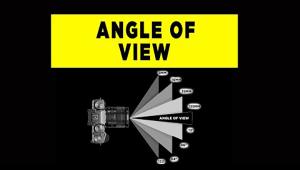Help!
Here is a quick tip list on letters for the HELP! desk:
Please confine yourself to only one question per letter. Both postal letters
and e-mails are fine, although we prefer e-mail as the most efficient form of
communication. Send your e-mail queries to editorial@shutterbug.com with Help
in the subject header and your return e-mail address at the end of your message.
Although we make every effort, we cannot promise to answer every HELP! letter.
When sending a response or suggestion that refers to a published letter please
include the month and page of the original question.
All postal letters to HELP! must be accompanied by a stamped, self-addressed
envelope to be considered for reply. We will respond to e-mail queries with
an e-mail.
Meter Use Info
In the November 2007 issue, William J. Slater inquired about books on the use
of a handheld exposure meter. One such reference, The Hand Held Exposure Meter
Book, was published in 1998.
Robert S. Solomon
via Internet
A brand-new book on the subject is Photographer's Exposure Handbook by Jack Neubart, published by Amphoto Books. I just received a copy and it seems quite complete.
Graflite Battery Case
In reference to Bob Tonn's questions about his Graflite battery
case on page 198 of your December 2007 issue. The Graflite battery case is for
flash bulb use. Even if you had a Stroboflash head there is no way you could
use it with this battery case. These battery cases were often used as handles
only for Stroboflash heads once electronic flash use became common and flash
bulbs went out of use. To use it as designed you need a reflector for the battery
case. There were several available, some for the large screw-type bulbs and
a smaller head for Press 25 bulbs. The Y cord is also for use with this battery
case, solenoid, etc. If you had a Stroboflash head you would need also a Stroboflash
battery pack to make it work, and that battery pack in no way resembles this
Graflite battery case. Heiland, later Honeywell, made similar photoflash units
and their reflectors may work on Graflite battery cases. I had visions of Mr.
Tonn attempting to attach an electronic flash head to a battery case and frying
himself in the process. Besides, he'd probably ruin a good battery case
or Stroboflash head! They can be hard to find because photographers use them,
and use them, and use them. They work on the newer Strobomatic 500 units, too,
and if you have a Strobe 500 with the AC base they can be and often are used
in the studio. With the Strobomatic 500 Graflex came out with a rubber adapter
(basically it looks just like a crutch tip) with a screw attached and a plastic
tube to create a handle for the flash heads. I more or less duplicated these
by using crutch tips to make an adapter I could slip over aluminum tubing I
was using to build a light stand. Just slip it over the end of the battery case
or better yet screw it to the bottom of the flash head and then slip it over
the end of the battery case. I have both but they are in storage and I can't
check this out. Graflex and Heiland/Honeywell both made adapters for use on
their battery cases as handles for electronic flash. This was added insurance
in case the electronic flash failed for any reason. A photographer could quickly
switch to using flash bulbs by just inserting the reflector. Even in the late
1960s and early '70s I often carried a carton of flash bulbs and photoflash
units as back-up insurance when photographing weddings. Eventually I stopped
and carried additional electronic flash units instead.
Nancy A. Black
Mount Vernon, OH
Thanks for sending your comments on proper usage of electronic flash with the 4x5 Super Graphic camera. I remember the crutch tip that was needed to fasten the flash head to the end of a tubular Graflite or Heiland battery case that attached to the mounting posts on the side of the camera body. The bulky and heavy power pack was carried with a shoulder strap and connected to the smaller flash head. The removable handle on the side of the camera normally contained three or four "D" cell batteries to fire the flash bulbs used in the flash gun. The handle was only used to hold the flash head positioned forward. Carrying a spare flash bulb head just in case the electronic flash malfunctioned was always a good idea. Besides, in spite of the weight and size of the portable electronic flash units of that era, small #5 and #25 flash bulbs (smaller than an egg) were more powerful with a higher guide number, thus had greater carrying range for more distant subjects. If you wanted even more powerful light you just used a bigger #22 flash bulb (similar in size to regular 100w Mazda screw-base light bulbs today). The optional adjustable focus reflectors used with both sizes of flash bulbs would concentrate the light to throw it out even farther. A good source for answers to any questions on Graflex equipment is the following comprehensive website: http://graflex.org/speed-graphic/. We appreciate you sharing your comments and will send them to Bob Tonn.
HELP! Addendum
I hope that you don't mind my adding a few comments to HELP! questions/answers
in the December 2007 issue: 1. Sarthak Sen's question: One of the problems
when using an old flash unit with a digital camera is that the flash trigger
voltage may be too high for the camera's circuitry, in which case the
camera could be damaged. I found this out when I investigated using my old Vivitar
285 on my new Nikon D300. The answer was to purchase a Wein "Hot Shoe
to Hot Shoe Safe Sync (HSHSB)" adapter, which lowers the voltage from
the flash to an acceptable level. It works! Cameras from different manufacturers
have varying tolerances for the trigger voltage; a voltage problem for a Nikon
D-SLR may not be a Canon problem. 2. I believe the "circuit" cameras
referred to by David Weinhouse are actually the "cirkut" cameras
made in the early 1900s. A good friend of mine, the late David Paskin, was an
expert on restoring these cameras, which is why I'm familiar with the
subject. Check out the website for the International Association of Panoramic
Photographers at www.panphoto.com/cirkut.php for further information.
Robert Bohl
via Internet
I checked with OmegaSatter, the firm that distributes the Wein shoe adapter and found the model you mentioned is discontinued, but was replaced by the SSHSHS (Safe Synch Hot Shoe to Hot Shoe) model. This sounds like a practical method of safeguarding expensive newer digital cameras when using older flash units with them. The website for panoramic enthusiasts should help the reader who inquired about cirkut cameras.
































